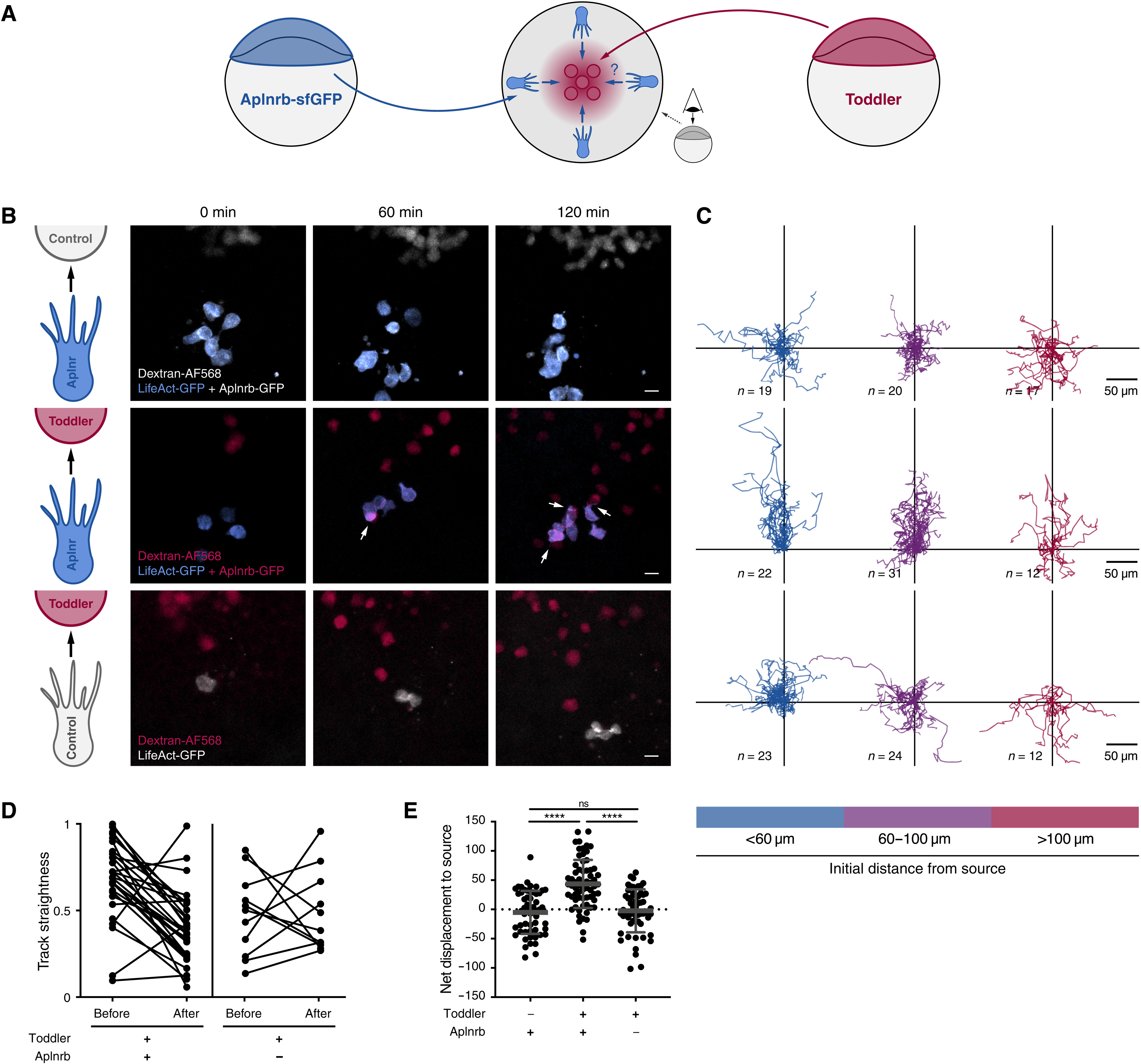Fig. 2
Image
Figure Caption
Fig. 2. Aplnr-expressing cells are attracted toward a local source of Toddler.
(A) Schematic representation of the experimental setup to test for Toddler functioning as a chemokine signal for Aplnr-expressing cells. Toddler-expressing cells, red; Aplnrb-expressing cells, blue. (B) Snapshots of a time-lapse confocal imaging series assessing the ability of Aplnrb-sfGFP–expressing toddler−/− cells to react to an ectopically located Toddler or control source. Top: Exposure of Aplnr-sfGFP–expressing cells (blue) to Toddler-deficient control cells (gray). n = 56 cells. Middle: Exposure of Aplnr-sfGFP–expressing cells to Toddler-overexpressing source cells (red). n = 65 cells. White arrows indicate contact between Aplnrb-sfGFP–expressing cells and Toddler source cells. Bottom: Exposure of cells deficient in Aplnr expression (gray) to Toddler-overexpressing source cells (red). n = 59 cells. (C) Cell tracks corresponding to conditions described in (B). Tracks were grouped by the distance of the cell from the source at the start of imaging (blue: <60 μm, purple: 60 to 100 μm, red: >100 μm). (D) Quantified track straightness of all Aplnrb-sfGFP–expressing and Aplnr-deficient cells that reach direct cell-cell contact with a Toddler-expressing source cell. Track straightness was compared before and after contact with the source cell. (E) Quantification of net displacement toward the source. All graphs and images are oriented with the source at the top.
Acknowledgments
This image is the copyrighted work of the attributed author or publisher, and
ZFIN has permission only to display this image to its users.
Additional permissions should be obtained from the applicable author or publisher of the image.
Full text @ Sci Adv

